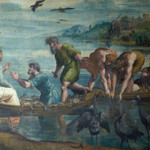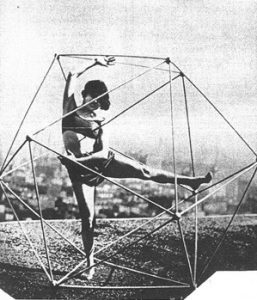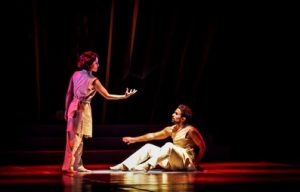Let’s look at where the dance takes place. Is the dance expansive, using lots of space, or is it more intimate, using primarily personal space? An exploration of space increases our awareness of the visual design aspects of movement.


Fig 5. Français : Épreuve gélatino-argentique 1925 24,5 x 21 cm 18 May 2017 Mathildemultiple. CC Attribution-Share Alike 4.0 International license.

Watch This
Excerpt from George Balanchine’s ballet Apollo. Notice the interlocking of circles of the dancers’ arms and the straight lines made by the dancers’ legs.
In this next video, notice various floor patterns such as circular pathways and straight lines that are made by the group of dancers. Observe the dancers’ use of gestures that go from near to far reach from personal space to filling the general space. The choreography also uses levels from low to high.